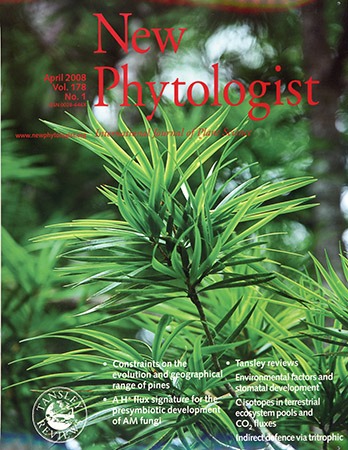
Biology Under Cover
Selected Journal & Book Covers from SBS Faculty
"Carbon isotopes in terrestrial ecosystem pools and CO2 fluxes"
Bowling, David and Diane Pataki
Summary
Stable carbon isotopes are used extensively to examine physiological, ecological, and biogeochemical processes related to ecosystem, regional, and global carbon cycles and provide information at a variety of temporal and spatial scales. Much is known about the processes that regulate the carbon isotopic composition (δ13C) of leaf, plant, and ecosystem carbon pools and of photosynthetic and respiratory carbon dioxide (CO2) fluxes. In this review, systematic patterns and mechanisms underlying variation in δ13C of plant and ecosystem carbon pools and fluxes are described. We examine the hypothesis that the δ13C of leaf biomass can be used as a reference point for other carbon pools and fluxes, which differ from the leaf in δ13C in a systematic fashion. Plant organs are typically enriched in 13C relative to leaves, and most ecosystem pools and respiratory fluxes are enriched relative to sun leaves of dominant plants, with the notable exception of root respiration. Analysis of the chemical and isotopic composition of leaves an leaf respiration suggests that growth respiration has the potential to contribute substantially to the observed offset between the δ13C values of ecosystem respiration and the bulk leaf. We discuss the implications of systematic variations in δ13C of ecosystem pools and CO2 fluxes for studies of carbon cycling within ecosystems, as well as for studies that use the δ13C of atmospheric CO2 to diagnose changes in the terrestrial biosphere over annual to millennial time scales.
